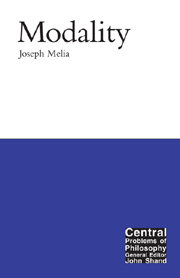1 - Introduction to modality
Summary
Modality
Suppose we possessed an extraordinarily comprehensive and accurate theory of the world. Suppose that the language of this theory contained a name for every object; every single thing, from the black holes hidden in the heart of the furthest galaxies, to the fine cobwebs swaying in the corner of an attic, is mentioned by this theory. Suppose also that this theory contained a predicate for every categorical property, simple or complex, that is actually instantiated. The theory says what things are like to the highest level of detail. It tells us whether something has a mass of 1.153 kg, whether it has a charge of 4.238322 coulombs, and whether it has a length of √2 metres. Suppose, finally, that everything the theory says is true. It truly reports the colours, tones and hues of each and every pixel currently appearing on my computer screen. It truly reports the shapes, sizes, masses and charges of each and every fundamental particle in my finger.
Everything in the theory is true. But does every truth appear within the theory? Would the theory account for every single matter of fact? If such a theory ever came to be written down, could thinkers and scientists finally rest, their work finished? Let us call the view that such a theory would be complete, that every truth would appear within the theory, the categorical hypothesis. Questioning the categorical hypothesis may seem absurd.
- Type
- Chapter
- Information
- Modality , pp. 1 - 20Publisher: Acumen PublishingPrint publication year: 2003



